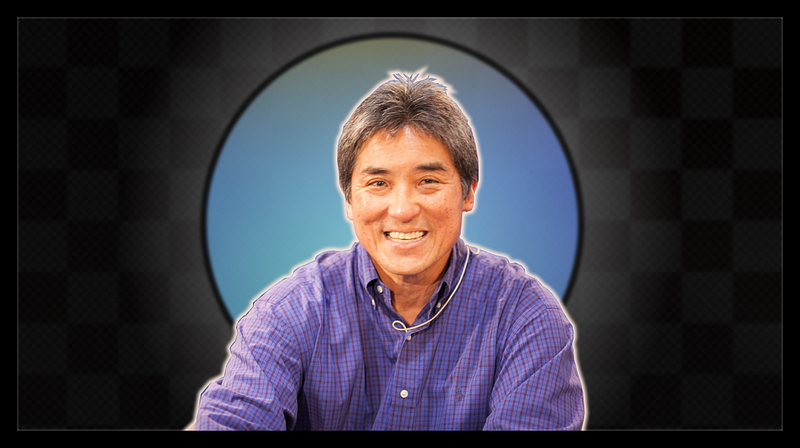Guy Kawasaki’s 10–20–30 Rule For Perfect Presentations
Aug 06, 2020
Guy Kawasaki’s 10–20–30 Rule For Perfect Presentations
Let the Silicon Valley legend teach you to pitch

Guy Kawasaki has listened to hundreds of entrepreneurs looking for funding. In his words, “most of these pitches are crap”.
He knows a thing or two about how to market effectively. He was a member of the original Mac team at Apple and then became their Chief Evangelist. Now he’s a Brand Ambassador for BMW USA and Chief Evangelist for Canva as well as owning his venture capitalist firm. He’s a bestselling business author too with The Art of the Start.
He created the 10–20–30 rule to help entrepreneurs pitch more effectively to venture capitalists but the rules are universal. Whether you’re trying to win a client or presenting to your staff, the principles of a good presentation remain the same.
I’ve sat through many poor presentations and I’ve given many too. We all know what bores us but Guy is giving us a way to break away from the crowd. This is for you if you’ve ever found your audience daydreaming while you present.
10 slides
In the past, I’ve been asked that awful question during a presentation; “how many more slides are there to go?”. There was always a pang of shame when my answer was over 20. No one asks a presenter this question if they are getting value.
Guy considers 10 the perfect number of slides. These should be focussing on the big ideas and if you think you need more, then you are poorly defining what matters. Your audience can only hold so many concepts in their minds at once and it’s no coincidence 10 is the perfect number in a headline too.
It avoids the issue of constantly changing slides while you are talking too. We are drawn to new visual information which takes away from the key component of the presentation; you!
For venture capitalists, he even gives the slides he expects:
- Title
- Problem/Opportunity
- Value Proposition
- Underlying Magic
- Business Model
- Go-To-Market Plan
- Competitive Analysis
- Management Team
- Financial Projections and Key Metrics
- Current Status
This won’t work for everyone but make sure there’s a clear journey between your slides. Set the titles of your slides out as above and check with others if the progression feels natural. You can even zoom out of your slides to assess the flow like a storyboard.
20 minutes long
TED talks given by the world’s leading experts are limited to 18 minutes. Some of the most earth-shattering concepts are explained under this limit. Guy is giving you an extra two minutes, can you really argue you deserve more?
In our age of social media where we expect information ever faster, brevity is vital. Venture capitalists are not superhuman, they have short attention spans too so don’t test their boundaries. Leave them pleasantly surprised at how you got through the main points without any fluff. You’re forced to focus on what is truly important when you introduce time limits.
Guy based his rule on an hour slot. Some attendants are bound to be late or need to leave early. You could have tech issues or any number of issues that cause you to overrun. It’s best to leave plenty of time for questions where you can engage with your audience rather than just talking at them. It removes the stop clock pressure so you can relax into your presentation.
30 font size minimum
It shouldn’t be news to you that too much text on a slide is a sin. Yet we still see it so often. The information on the slides is to support what you are saying not replace it. We read faster than we hear so your audience will know what you’re going to say before you say it. I know I’ve read a slide and checked my phone while the speaker catches up.
If you have at least font size 30 then there’s an automatic limit on the number of words you can have on the slide. This is the spirit behind the rule and there are few legitimate reasons to break it. If you want to handout information after the presentation, then it doesn’t have to be the same as what you presented. I’ve used a slide deck for presenting and a separate deck for handing out afterward in the past. Then both are optimized for their unique purposes.
There’s no chance the audience will remember every word on all your slides. If you reduce the information on the slides, you make it more likely they’ll remember something of importance. You’ve done a good job if even a few slides are etched into their memory.
Cheatsheet
Guy has sat on the other side of the table you want to impress. His 10–20–30 rule is logical and forces us not to allow excess to creep in. Now it’s meant as a guideline and if you can be even more efficient then don’t make it longer for the sake of it!
Here’s the rundown:
- 10 slides — Focus on a few memorable points
- 20 minutes long — Be kind to people’s attention spans
- 30 font size minimum — Let your audience listen to your words rather than read
Thank you for reading and have a great day!

